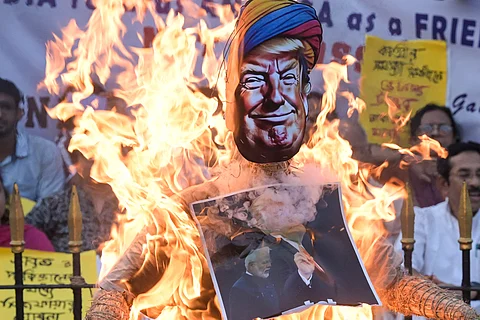
- NEWS
- the EDIT
- COMMENTARY
- BUSINESS
- LIFE
- SHOW
- ACTION
- GLOBAL GOALS
- SNAPS
- DYARYO TIRADA
- MORE

By imposing a fresh 25 percent tariff on Indian imports, US President Donald Trump appears to be testing whether his hardline trade strategy is starting to yield results.
Trump announced Wednesday that the new duties, along with an unspecified "penalty" over New Delhi's continued energy and arms trade with Russia, would take effect Friday. These come on top of a series of tariff hikes aimed at reshaping US trade relationships under what Trump calls a "reciprocal" framework.
"Remember, while India is our friend, we have, over the years, done relatively little business with them because their Tariffs are far too high," Trump said in a Truth Social post. He accused India of imposing some of the "most strenuous and obnoxious non-monetary Trade Barriers of any Country."
India has yet to reach a trade deal with the US, with talks bogged down by disagreements over agriculture and dairy sectors. Despite the diplomatic tone, the tariff hike signals escalating pressure on India as the US seeks to isolate Russia economically.
Trump's grievances extended beyond tariffs. He pointed to India's continued defense and energy deals with Moscow, saying India is "Russia's largest buyer of ENERGY, along with China, at a time when everyone wants Russia to STOP THE KILLING IN UKRAINE."
While the impact on India could be severe, some observers are now asking: are Trump’s protectionist moves finally boosting the US economy?
Government data released Wednesday showed a 3 percent GDP growth in the second quarter, a sharp recovery from a 0.5 percent contraction in Q1. The rebound was driven by a shift in trade flows, likely influenced by tariff policies that caused companies to front-load imports earlier in the year.
Still, not everyone is convinced. Nationwide chief economist Kathy Bostjancic warned that underlying growth slowed to just 1.2 percent, once distortions from trade adjustments were removed. Real consumer and business spending showed only modest gains, and some companies were still holding back on investments due to ongoing policy uncertainty.
Meanwhile, Trump has set deadlines and threats across the board: a 50 percent tariff on Brazil, more duties on China, and a warning to Russian President Vladimir Putin to change course in Ukraine within 10 days.
As talks with China continue and preliminary deals emerge with countries like Japan, Vietnam, and the EU, Trump’s strategy seems to hinge on one principle: economic leverage. The question remains whether this high-stakes approach will offer sustainable growth or bring ripple effects to the global economy.
